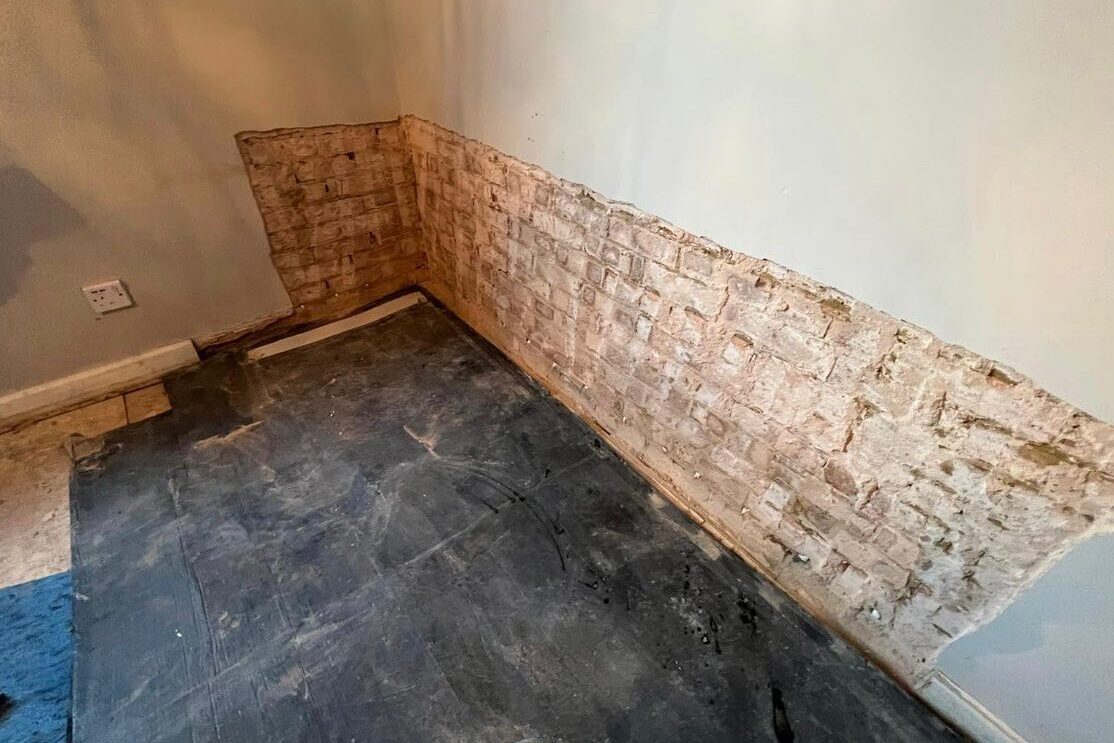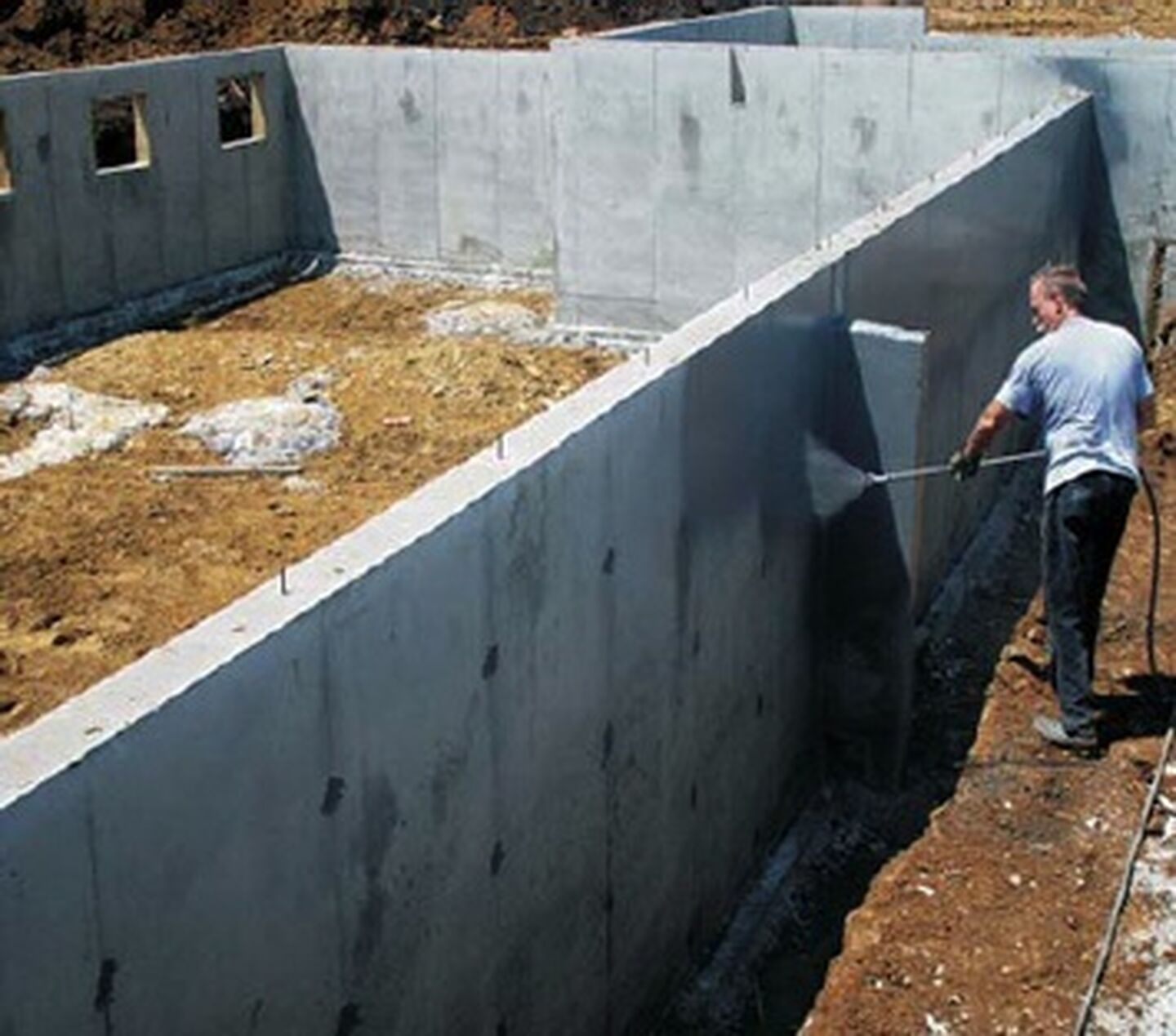Checklist for damp specialist newcastle to identify moisture issues early
Checklist for damp specialist newcastle to identify moisture issues early
Blog Article
Recognizing the Significance of Damp Proofing in Preventing Structural Damages
Moist proofing works as a crucial defense against moisture infiltration in buildings. This safety procedure can protect against considerable structural damage, yet many residential or commercial property owners continue to be unaware of its significance. Identifying the signs of wetness and comprehending the numerous options readily available can be crucial. Overlooking wet proofing can lead to serious consequences. What are the specific risks and solutions that residential or commercial property proprietors should take into consideration?
What Perspires Proofing and Just How Does It Function?
Damp proofing offers as an essential obstacle against dampness intrusion in structures. mould treatment newcastle. This procedure involves using certain products and strategies to stop water from passing through walls, floors, and other architectural aspects. Typically, moist proofing can be attained via the setup of damp evidence membrane layers, coatings, or using specialized sealants.These approaches work by creating a safety layer that hinders moisture motion, ensuring that the indoor environment remains healthy and completely dry. Moist proofing is particularly crucial in areas vulnerable to high humidity or groundwater, as it helps preserve the integrity of the structure over time.Moreover, reliable wet proofing adds to power performance by preventing warm loss connected with wet settings. By resolving potential wetness problems before they escalate, damp proofing functions as a positive procedure in securing buildings from the damaging results of water damage, eventually extending their lifespan and maintaining their value
Typical Indicators of Dampness in a Building
Moisture concerns within a building can show up via a number of obvious signs that suggest the existence of wetness. One prominent indicator is the appearance of water discolorations on ceilings or walls, which commonly suggests moisture infiltration. Furthermore, bubbling or peeling off paint can suggest that excess humidity is trapped under the surface, resulting in deterioration. An additional usual indication is the existence of mold and mildew, which thrive in damp conditions and can typically be determined by their musty odor. Moreover, a surge in moisture degrees can cause condensation on windows and various other surface areas, highlighting wetness troubles. Finally, uneven or deformed flooring might signal underlying dampness that jeopardizes structural integrity. Acknowledging these indicators early can assist minimize potential damage and preserve a risk-free living environment. Normal examinations and prompt action are vital in addressing wetness concerns before they escalate.
The Risks of Disregarding Damp Proofing
Overlooking wet proofing can result in substantial threats to a structure's structural integrity, as wetness accumulation might damage walls and structures. Additionally, long term moisture creates an atmosphere for mold and mildew growth, posing significant carcinogen to occupants. Resolving these threats is essential for ensuring both safety and security and durability of the residential or commercial property.
Structural Stability Dangers
When home owners forget the significance of reliable damp proofing, they reveal their residential or commercial properties to significant structural stability risks. Prolonged dampness seepage can result in the advancement of mold, which compromises fundamental aspects and can endanger total security. In addition, excess dampness can deteriorate concrete and brickwork, leading to fractures and architectural failures. Timber components are particularly vulnerable; they can rot and shed load-bearing capacity, posing serious risks to the structure's framework. Furthermore, neglected damp conditions may draw in pests, such as termites, which even more intensify structural wear and tear. Ultimately, disregarding wet proofing steps can bring about expensive fixings and prospective safety hazards, underscoring the crucial function of aggressive moist monitoring in maintaining the integrity of houses.
Carcinogen Issues
How can an apparently minor oversight cause serious wellness threats? Overlooking wet proofing can develop an environment for mold development, which positions substantial health and wellness dangers. Mold spores can trigger allergies, respiratory system issues, and other wellness difficulties, especially in at risk populations such as youngsters, the senior, and individuals with pre-existing problems. Additionally, persistent moisture can attract pests like bugs and rats, which bring diseases that even more jeopardize health. The visibility of wetness additionally adds to a decline in indoor air top quality, aggravating asthma and other respiratory conditions. The failing to deal with moist issues not just threatens architectural integrity however also jeopardizes the well-being of residents, highlighting the vital requirement for efficient moist proofing steps.
Various Kinds of Damp Proofing Solutions
Although numerous aspects can add to damp concerns in buildings, picking the proper wet proofing solution is necessary for preserving architectural integrity. A number of alternatives are offered, each tailored to particular conditions.One common remedy is a damp-proof membrane layer (DPM), commonly made from polyethylene or bitumen, which is installed in floors and walls to prevent moisture ingress. An additional option is damp-proof programs (DPC), which are layers of waterproof material put within walls to obstruct climbing damp.Chemical get more info damp proofing entails infusing waterproofing chemicals right into walls to develop an obstacle versus dampness. Furthermore, external treatments such as tanking, which involves applying a waterproof layer to the beyond structures, can be efficient in protecting against water penetration.Each option has its benefits and is selected based upon the building's details concerns, ecological conditions, and long-term upkeep factors to consider, ensuring optimal protection against damp-related damage.

The Price of Damp Damages vs. Avoidance
Recognizing the monetary implications of damp damages contrasted to avoidance highlights the value of positive procedures. The prices linked with wet damages can be considerable, consisting of repair work to architectural aspects, mold and mildew remediation, and prospective health-related expenses. House owners might face considerable financial strain if extensive damages happens, causing increased insurance costs and lost residential or commercial property value.In comparison, investing in damp proofing services is typically much a lot more economical. Preliminary costs for avoidance techniques, such as boosting or installing damp-proof membranes drain systems, are typically surpassed by the long-term cost savings from staying clear of expensive repair work. In addition, avoiding moist issues can enhance a residential or commercial property's total worth and appeal, making it a wise investment. When evaluating the cost of moist damages versus prevention, it becomes clear that taking proactive actions can secure financial passions and keep the integrity of the residential property gradually.
Choosing the Right Damp Proofing Approach for Your Home
Which damp proofing method is most suitable for a details property often depends upon numerous variables, including the building's age, existing wetness concerns, and regional environmental conditions. For older structures, conventional approaches such as asphalt membranes or cementitious coatings might be more efficient, as they can provide a robust barrier versus increasing moist. On the other hand, more recent structures could benefit from contemporary options like injected damp-proof training courses, which are less intrusive and can be customized to certain moisture challenges.Additionally, homes in areas with high water tables or heavy rainfall may require even more sophisticated techniques, such as cavity wall surface drainage systems or exterior waterproofing. Property owners need to also take into consideration the details products utilized in their structure's building, as some techniques might not be compatible. Ultimately, a complete assessment by an expert can guide building proprietors in picking one of the most efficient wet proofing approach tailored to their special circumstances.
Maintaining Your Damp Proofing System With Time
Regular upkeep of a damp proofing system is vital for ensuring its lasting effectiveness and safeguarding a building from moisture-related damage. Building owners need to carry out regular evaluations to identify any type of indications of wear or compromise in the moist proofing layer. This consists of monitoring for cracks, peeling off paint, or mold and mildew growth, which may show dampness intrusion.Additionally, it is a good idea to clean seamless gutters and downspouts routinely to stop water accumulation around the foundation. If damage is observed.Engaging professional solutions for regular evaluations can further improve the resilience of the system, reapplying sealers or membrane layers might be necessary. These professionals can provide insights into possible vulnerabilities and suggest prompt repairs.
Regularly Asked Concerns
The Length Of Time Does Damp Proofing Treatment Last Before Needing Repairs?
The longevity of wet proofing therapy generally varies from 10 to thirty years, depending upon variables such as the method used, environmental problems, and maintenance techniques. Normal inspections can assist determine when repair services might be needed.
Is Do It Yourself Damp Proofing Effective Compared to Expert Providers?
The efficiency of do it yourself moist proofing varies substantially. damp specialist newcastle. While some individuals might accomplish acceptable outcomes, professional solutions generally assure thorough solutions, leveraging competence and high quality materials to avoid future issues a lot more accurately than many do it yourself efforts
Can Damp Proofing Improve Indoor Air Top Quality?
The question of whether moist proofing can enhance interior air top quality occurs regularly. Effective damp proofing lowers moisture degrees, consequently decreasing mold and mildew growth and allergens, eventually adding to a healthier indoor atmosphere for passengers.
Exist Details Rules for Damp Proofing in Different Locations?
Regulations for moist proofing differ by area, commonly affected by local building regulations and environmental conditions. Conformity guarantees effective wetness control, advertising and safeguarding frameworks safety, which highlights the necessity for adherence to these details laws.

What Are the Long-Term Benefits of Proper Damp Proofing?
The long-term benefits of appropriate wet proofing consist of enhanced architectural honesty, lowered upkeep prices, boosted indoor air quality, and increased residential or commercial property value. These benefits add to a much healthier living environment and prolonged life expectancy of buildings. Commonly, wet proofing can be achieved through the installation of wet evidence membranes, finishes, or the use of specialized sealants.These approaches work by producing a safety layer that prevents dampness activity, making sure that the interior setting remains completely dry and healthy. Moist proofing is specifically vital in locations susceptible to high humidity or groundwater, as it aids keep the integrity of the structure over time.Moreover, efficient damp proofing adds to energy efficiency by protecting against warm loss associated with moist environments. Ignoring damp proofing can lead to considerable threats to a structure's architectural stability, as wetness accumulation may damage walls and foundations (damp specialist newcastle). Various aspects can contribute to damp concerns in buildings, selecting the ideal damp proofing option is crucial for protecting architectural honesty. Which damp proofing technique is most ideal for a particular residential property usually depends on different elements, including the building's age, existing dampness problems, and neighborhood ecological conditions
Report this page